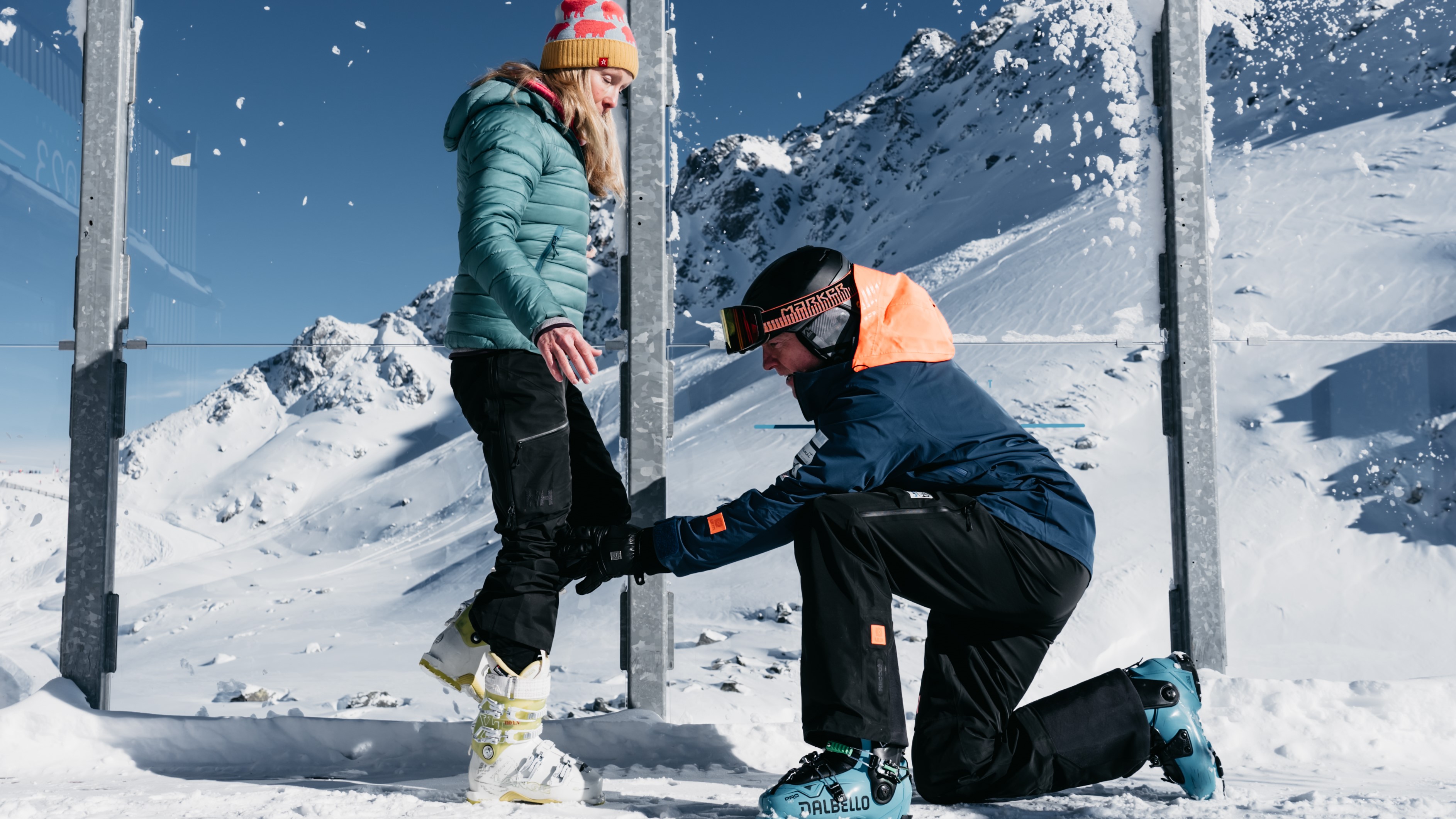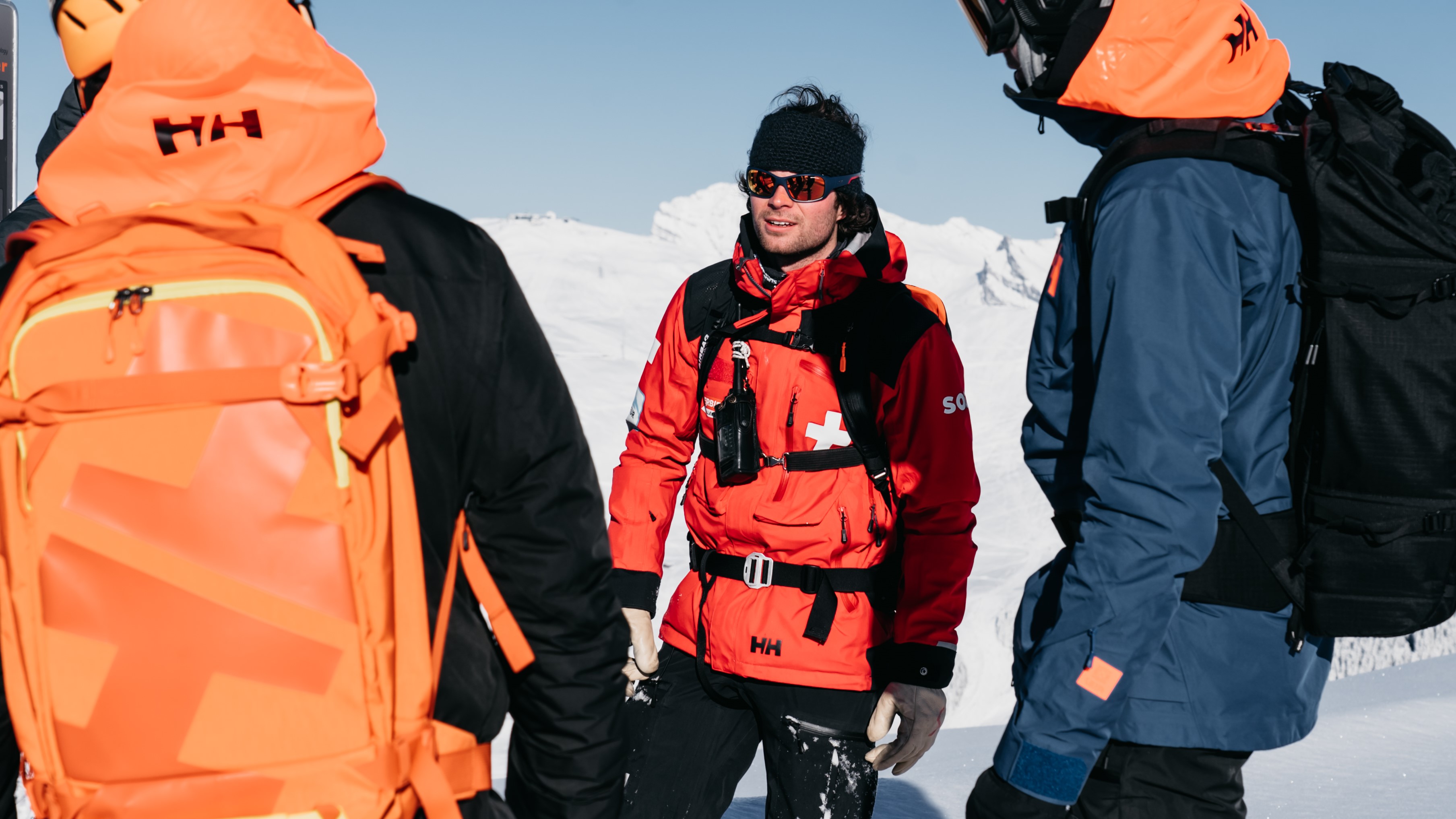
Skiing is an injury-prone sport. Trust me, I’ve been the recipient of not one but two knee surgeries as the result of my love of powder, and working as a yoga teacher in a ski resort for 11 years, I’ve helped a lot of pro and amateur skiers rehab from skiing injuries.
Injuries are just part and parcel of skiing. A nine-year study of two California ski resorts published in the Western Journal of Medicine recorded a total of 24,340 injuries and 9,201,486 total lift tickets sold. That tallies up to an overall injury rate of 2.6 injuries per 1,000 skier days and researchers found that the injury rate increased slowly over the period studied. You probably won’t be surprised to learn that knee injuries were the most common, accounting for 35 percent of all injuries.
Some injuries occur as the result of collisions while others are the consequence of poor technique. Both advanced and beginner skiers get injured. Basically, skiing is an inherently dangerous sport and while some things are out of your control, there are some actions that you can take to help reduce your risk of ski injuries. Read on for our top nine recommendations to help you prevent ski injuries and keep enjoying those days on the hill.

1. Get in shape
Skiing is a very physical sport, and at the Vail, Colorado gym where I worked for seven years, our entire fall programming was geared towards helping people get in shape for ski season – but how you go about doing that remains a matter of some debate.
As Verbier-based ski instructor Warren Smith points out, “there are movement patterns in skiing that you don’t do in everyday life,” so while general physical fitness is a good start, activities like running, swimming and yoga aren’t necessarily focused enough to help you prevent injuries.
Instead, he advises that many people who might lack general fitness can get themselves up to speed in just a few weeks by focusing on three main areas: ankle strength and mobility to help you prepare for wearing ski boots, adductor and abductor strength and improving the internal rotation of your hips, both to support your knee joints.
Speak to your personal trainer about focusing on these areas, or begin at home with these skier improvement tutorials from the Warren Smith Ski Academy:

2. Fine tune your gear
Ski gear has come a long way, but gear that doesn’t fit right or needs tuning could result in injuries, especially if your boots are too big or skis too long. If you’re renting gear, you should be able to trust that everything is tuned and waxed, but talk to the pros in the shop about fitting and sizing and let them guide you. If something doesn’t feel right, speak up.
If you’re buying new gear or using gear you already own, take it to a ski shop and make sure it’s the right size for your needs. Get it fitted, tuned and waxed and make sure your bindings are loose enough that you’ll pop out of your skis if you fall. You can get started with our articles on how to choose the right ski length and how to fit ski boots.
3. Warm up
Once you get out on the hill, excitement can definitely take over and you might find yourself haring off to ski bumps or hit your favorite black diamond before the crowds show up and ski out all the powder, but hold your horses. Warming up for skiing doesn’t mean going for a jog first – although a few dynamic stretches in the parking lot won’t hurt – but it is a good idea to start off with a few easier runs to get your muscles firing and your head in the right space for skiing.
As I already mentioned, skiing requires movement patterns that we don’t use normally, so it’s a good idea to let your hips and spine loosen up before putting more load on them. These first few runs also give you an opportunity to check in with your body and see how you’re feeling. If you realize you’re still tired from the last day of skiing or you’ve got any annoying aches and pains, it might be a good day to call it early.

4. Beware early season conditions
On any mountain, conditions will change daily so it’s helpful to check the mountain weather forecast so you know what to expect. Powder skiing requires a whole different skill set to groomers, falling snow reduces visibility and warmer temperatures can create sticky snow that grabs at your skis when you’re trying to turn.
Perhaps the most unpredictable conditions, however, are those of early season. This is because there is less snow coverage, so at a resort you might find bare areas of rock and grass still poking through that you don’t want to ski over if you can avoid it, while off-piste, trees and other obstacles hidden from view might actually be really close to the surface and ready to grab your ski from beneath. In the backcountry, avalanche risk can be higher at this time of year with unstable snow patterns.
Every year is different, but in early season and when there hasn’t been much snow, it’s usually smart to stick to groomed terrain – and don’t even think about ducking those ropes.
5. Know thyself
It’s easy to lose perspective when you’re having fun, or skiing with friends who are more advanced or more gung ho than you are, but pushing yourself beyond your limits on the hill is a major source of injury. When you get tired, your skiing gets sloppy and you make stupid mistakes. This could lead to a lazy turn where you end up going down or worse, a collision.
Know your limits when it comes to skiing and fitness in general. Don’t take on terrain you’re not sure you can handle, unless there’s an easy way to bail, and don’t ski until you’re exhausted.

6. Take lessons
Speaking from personal experience, taking lessons as an experienced skier can be a total game changer. I took lessons when I started skiing in my early twenties, and once I had the basics down I just skied for decades without paying much attention to my technique. Then last year, aged 41, I took some powder skiing lessons with Smith in Verbier and in just a couple of hours saw more improvement in my skiing than I’d seen in the previous 20 years.
Lessons probably seem like they’re just for beginners, but it’s never too late to improve. They can be pricey, I know, but particularly if you’re a US skier, I can assure you that they’re cheaper than a knee surgery.
7. Know the code
Because there’s no ski police, no referee and no governing body, the onus is really on you as the skier or snowboarder to practice personal awareness and responsibility.
Skiing can seem a bit like the Wild West at times, and while codes and etiquette might vary from state to state and country to country, there are some basic guidelines to observe for safety, such as not stopping where you aren’t visible from above, and not getting too close to other skiers. Not observing these codes could result in injury, or if you’re Gwyneth Paltrow, a highly publicized lawsuit. Check out our article on skier safety for more details before you go.

8. Pace yourself
If you live in a ski resort and go up for an hour or two at a time, you can probably afford to just charge ahead, but if you’re heading out on vacation for a week of skiing, you’ll want to pace yourself. If you do plan to ski an entire day, schedule in a morning break for hot cocoa and a longer stop for lunch. This lets your refuel and gives your legs a break.
9. Skip last chair
There’s a superstition among skiers that you should never call “last run” as this is usually when skiers get injured, and the grain of truth in that is that most ski accidents really do occur at the end of the day – because that’s when most skiers take their last run.
According to the University of Utah Health, most accidents occur after 3:30 p.m. This is for a variety of reasons, but primarily it’s because everyone is tired, and almost everyone wants to head down the same two or three runs at the same time. If you skip last chair, you won’t be heading into a congested run full of tired skiers making mistakes, so try to end your day by 3 p.m. and skip the madness.







